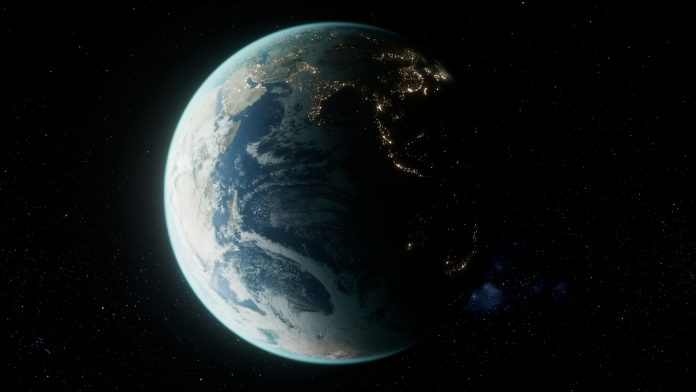
Scientists around the world are constantly searching for planets outside our solar system that could potentially support life.
Their telescopes, both on the ground and in space, often focus on large planets because they are easier to spot and study.
However, new research from the University of Rochester suggests that scientists should also pay attention to planets that are closer in size to Earth.
The study, published in The Planetary Science Journal, highlights that rocky planets with large moons might have a higher potential to host life.
Our moon, for instance, plays a crucial role in controlling essential aspects of life on Earth, including the length of our day, ocean tides, and maintaining a stable climate.
Miki Nakajima, an assistant professor of earth and environmental sciences at Rochester and the lead author of the study, points out that smaller planets, similar in size to Earth, are harder to observe and have not been the main focus of moon hunts. However, these planets might actually be better candidates to have moons.
The origin of Earth’s moon has been debated for a long time. The leading theory is that the moon formed about 4.5 billion years ago when Earth was struck by a Mars-sized object. This collision created a partially vaporized disk of debris that eventually formed the moon. There are other theories suggesting Earth collided with a much larger object, resulting in a completely vaporized disk.
Our solar system has nearly 300 moons, but most of them are much smaller relative to their host planets compared to our moon. This size difference matters because moons that form through large impacts tend to be bigger, and these larger moons can significantly influence the development of life.
While some scientists believe a moon isn’t necessary for a planet to sustain life, they acknowledge that our large moon has been crucial for the development of complex life forms on Earth. The moon’s gravitational pull creates tidal flows in the oceans, which are believed to have helped form the nucleic acids that led to life. Additionally, the moon stabilizes Earth’s tilt, keeping our climate predictable and making it easier for life to evolve.
Scientists have detected more than 5,000 exoplanets, or planets beyond our solar system. However, finding exomoons (moons orbiting these exoplanets) is much harder because they are smaller and less visible. So far, only a few possible exomoons have been identified.
Nakajima and her team used computer simulations to study how moons form, focusing on a process called “streaming instability.” This process helps form the basic building blocks of planets and moons. They discovered that while streaming instability can create small moonlets, these moonlets often fall back to the planet and are destroyed due to the drag from the vapor-rich disk created by a giant collision.
The study suggests that for a moon to form and survive, the impact creating it must be relatively gentle, like the Mars-sized object that hit Earth. Larger impacts would create too much vapor and result in much smaller moons.
This research indicates a significant difference between how planets and moons form. While streaming instability is crucial for planet formation, it doesn’t work as well for forming large moons from vapor-rich disks. Large moons, like Earth’s moon, likely form from vapor-poor disks around smaller planets.
The Space Telescope Science Institute has selected two proposals to use the powerful James Webb Space Telescope to look for exomoons, one around a Jupiter-like planet and another around Earth-like planets. These observations will help test Nakajima’s theories and could bring us closer to finding a second Earth.
Source: University of Rochester.



